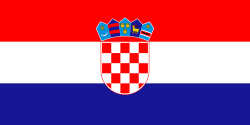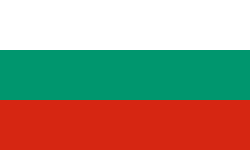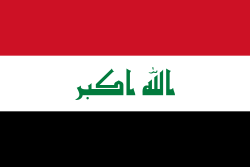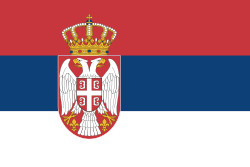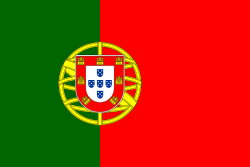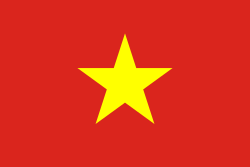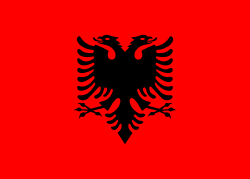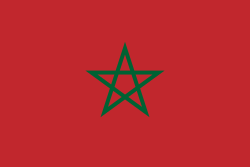Tysklands demografi
| Tysklands demografi | |
 | |
| Folkmängd | 83 121 363 (31 mars 2021)[1] |
|---|---|
| Befolkningstäthet | 232 inv./km² |
| Födelsetal | 9,3 födslar/1000 invånare (2020)[2] |
| Dödstal | 11,8 dödsfall/1000 invånare (2020) |
| • män | 78,64 år |
| • kvinnor | 83,40 år |
| Summerad fruktsamhet | 1,53 barn per kvinna (2020) |
| Spädbarnsdödlighet | 3,46 dödsfall/1000 levande födslar (2014) |
Tysklands demografi övervakas av myndigheten Statistisches Bundesamt. Tysklands befolkning var 83 121 363 den 31 mars 2021, vilket gör landet till det näst folkrikaste landet i Europa efter Ryssland, liksom det 19:e mest folkrika landet i världen. Den summerade fruktsamheten var 1,53 barn per kvinna år 2020, vilket är långt under ersättningsnivån på 2,1 barn per kvinna.
Etnicitet

Utrikes födda
| # | Land | Antal (2021) |
|---|---|---|
| 1 | 1 458 360 | |
| 2 | 870 995 | |
| 3 | 867 585 | |
| 4 | 844 535 | |
| 5 | 646 845 | |
| 6 | 434 610 | |
| 7 | 410 885 | |
| 8 | 362 565 | |
| 9 | 309 820 | |
| 10 | 276 925 | |
| 11 | 268 620 | |
| 12 | 262 005 | |
| 13 | 239 630 | |
| 14 | 222 065 | |
| 15 | 212 735 | |
| 16 | 187 865 | |
| 17 | 186,695 | |
| 18 | 171 895 | |
| 19 | 155 310 | |
| 20 | 150 435 | |
| 21 | 146 450 | |
| 22 | 140 495 | |
| 23 | 138 730 | |
| 24 | 132 435 | |
| 25 | 129 105 | |
| 26 | 119 255 | |
| 27 | 110 515 | |
| 28 | 90 360 | |
| 29 | 85 805 | |
| 30 | 84 945 | |
| 31 | 78 740 |
Referenser
- Den här artikeln är helt eller delvis baserad på material från engelskspråkiga Wikipedia.
Noter
- ^ ”Bevölkerungsstand”. Arkiverad från originalet den 23 augusti 2019. https://web.archive.org/web/20190823083410/https://www.destatis.de/DE/Themen/Gesellschaft-Umwelt/Bevoelkerung/Bevoelkerungsstand/Tabellen/zensus-geschlecht-staatsangehoerigkeit-2019.html. Läst 12 mars 2021.
- ^ ”Lebendgeborene und Gestorbene”. https://www.destatis.de/DE/Themen/Gesellschaft-Umwelt/Bevoelkerung/Geburten/Tabellen/lebendgeborene-gestorbene.html. Läst 13 september 2019.
Externa länkar
 Wikimedia Commons har media som rör Tysklands demografi.
Wikimedia Commons har media som rör Tysklands demografi.
| ||||||||
Media som används på denna webbplats
The Flag of Europe is the flag and emblem of the European Union (EU) and Council of Europe (CoE). It consists of a circle of 12 golden (yellow) stars on a blue background. It was created in 1955 by the CoE and adopted by the EU, then the European Communities, in the 1980s.
The CoE and EU are distinct in membership and nature. The CoE is a 47-member international organisation dealing with human rights and rule of law, while the EU is a quasi-federal union of 27 states focused on economic integration and political cooperation. Today, the flag is mostly associated with the latter.
It was the intention of the CoE that the flag should come to represent Europe as a whole, and since its adoption the membership of the CoE covers nearly the entire continent. This is why the EU adopted the same flag. The flag has been used to represent Europe in sporting events and as a pro-democracy banner outside the Union.Flag of Syria. Originally flag of the Syria Revolution (from 2011), de facto flag of Syria beginning December 2024, official beginning March 2025.
Det är enkelt att lägga till en ram runt den här bilden
Flag of Portugal, created by Columbano Bordalo Pinheiro (1857–1929), officially adopted by Portuguese government in June 30th 1911 (in use since about November 1910). Color shades matching the RGB values officially reccomended here. (PMS values should be used for direct ink or textile; CMYK for 4-color offset printing on paper; this is an image for screen display, RGB should be used.)
Flag of Iran. The tricolor flag was introduced in 1906, but after the Islamic Revolution of 1979 the Arabic words 'Allahu akbar' ('God is great'), written in the Kufic script of the Qur'an and repeated 22 times, were added to the red and green strips where they border the white central strip and in the middle is the emblem of Iran (which is a stylized Persian alphabet of the Arabic word Allah ("God")).
The official ISIRI standard (translation at FotW) gives two slightly different methods of construction for the flag: a compass-and-straightedge construction used for File:Flag of Iran (official).svg, and a "simplified" construction sheet with rational numbers used for this file.
Författare/Upphovsman: Underlying lk, Licens: CC BY-SA 4.0
Germans without a migrant background (2016). Derivative of File:Regierungsbezirke Deutschlands 1981-2008.svg. Data source: Destatis.
Författare/Upphovsman: Kaj Tallungs, Licens: CC BY-SA 4.0
Source: Federal statistical office:
The age/sex table from here: https://www-genesis.destatis.de/genesis/online?sequenz=statistikTabellen&selectionname=12411&language=en#abreadcrumb
Combined with the shape of the 85+ aged population from this animated pyramid:
https://service.destatis.de/bevoelkerungspyramide/index.html#!y=2018&v=2





